THE HIDE INSTALLATION + SCULPTURE SHOWCASE
14 & 15 / 21 & 22 June 2025
Jessica Akerman, Barbara Beyer, Flora Bradwell, Luke Chin-Joseph, Will Cruickshank,
Liz Elton, Chantal Powell, Alice Sheppard Fidler, Valentino Vannini & Andrea V. Wright
and works made collaboratively by young people from The Venture Hub, White City, Gloucester and Young Gloucestershire

Luke Chin-Joseph - Windmill 2.0 - 2025, Steel, plaster, 175 x 104 x 30cm

Alice Sheppard Fidler - Seemingly arbitrary decisions of life shattering scale - 2025, Outdoor speaker, amp, player, 15 x 20 x 10 cm

Andrea V. Wright - Conduit - 2024/25, Salvaged pipes, sand, canvas, polyurethane foam, pigment, latex, thread, paint, 200 x 102 x 60 cm

Young People from Young Gloucestershire (18-25yrs olds approx), One Leg Many Heads, 2025, Mixed Media, 184 x 15 cm
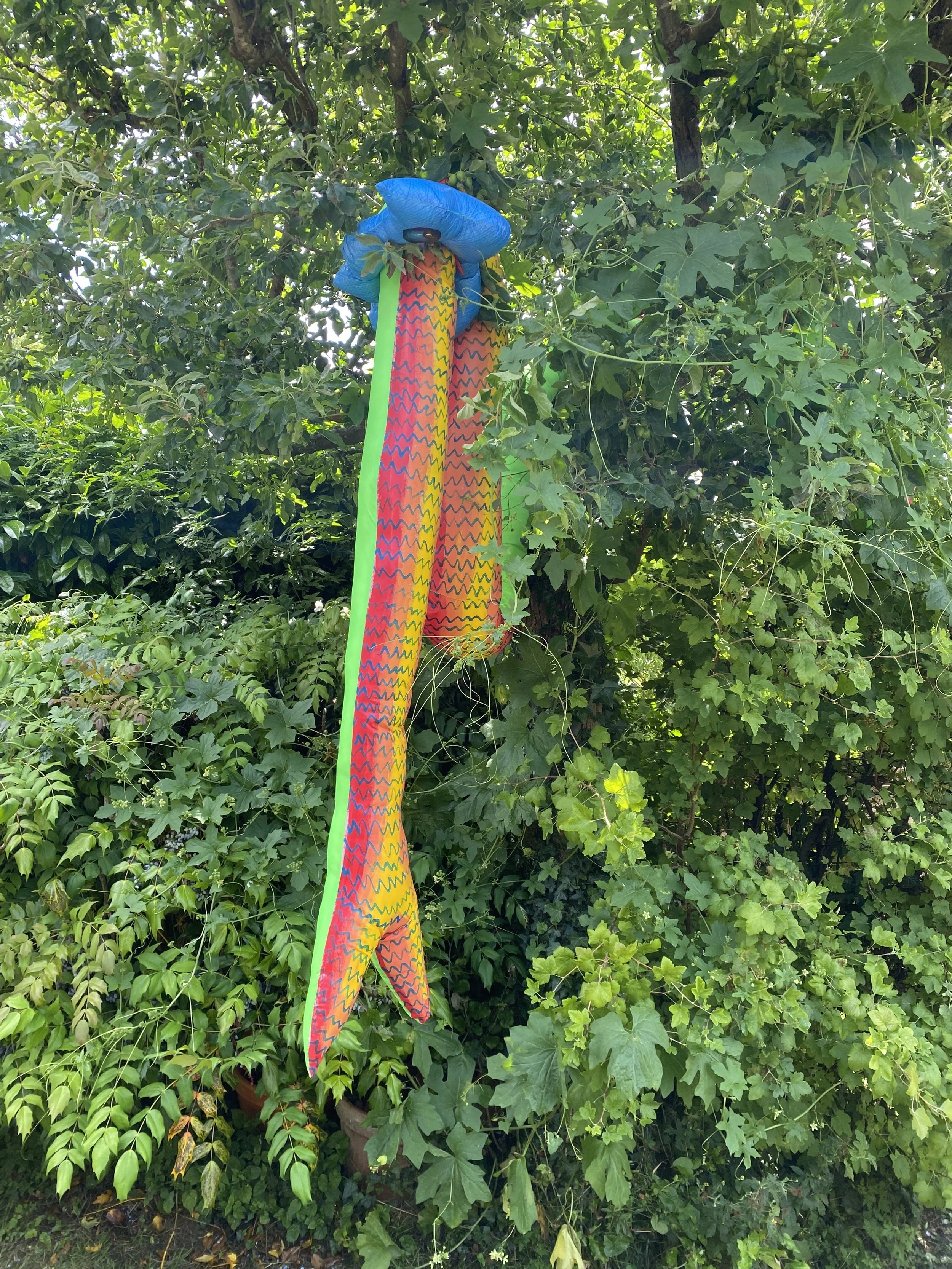
Flora Bradwell - Snake Oil - 2025, Acrylic on soft sculpture, Approx 7m long
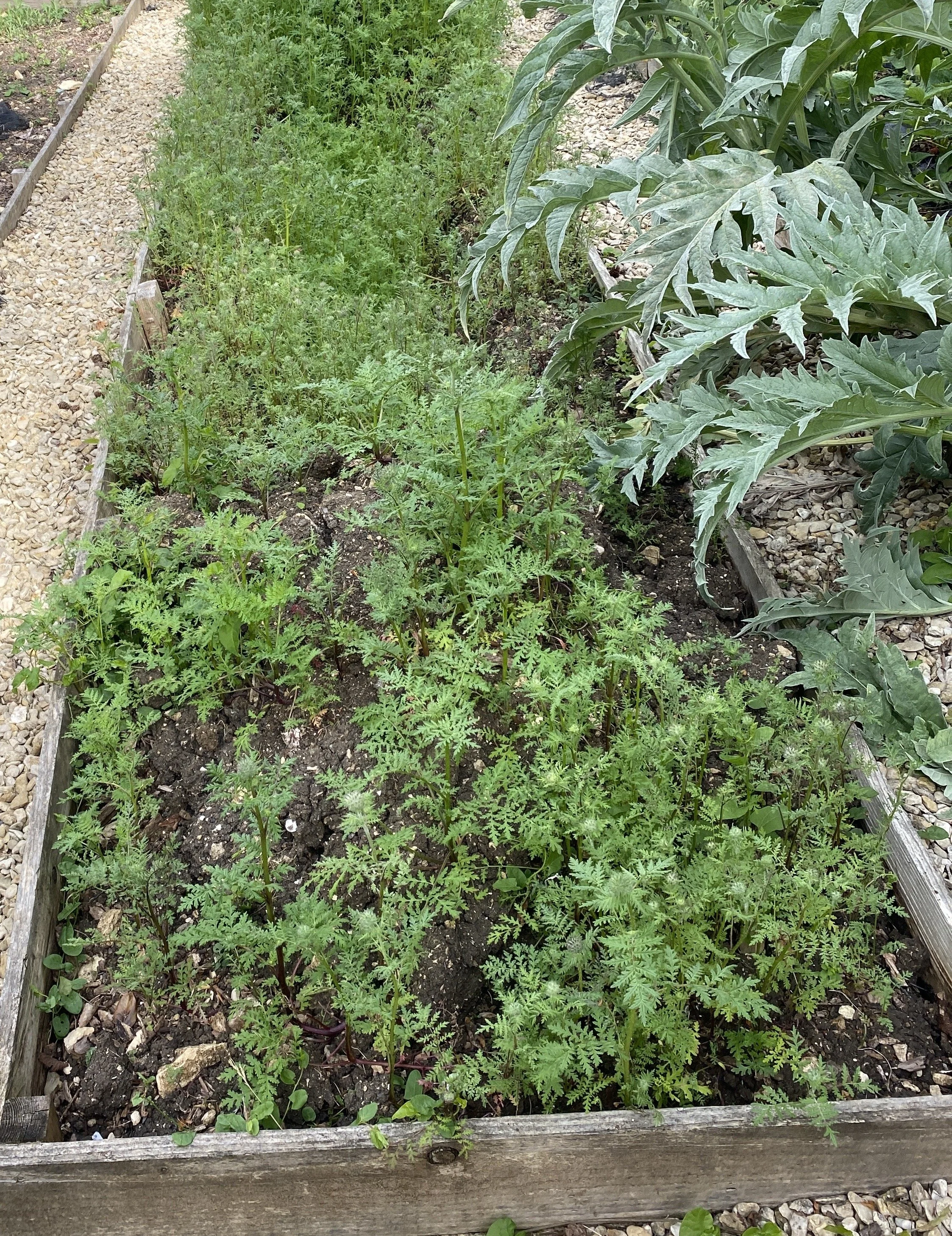
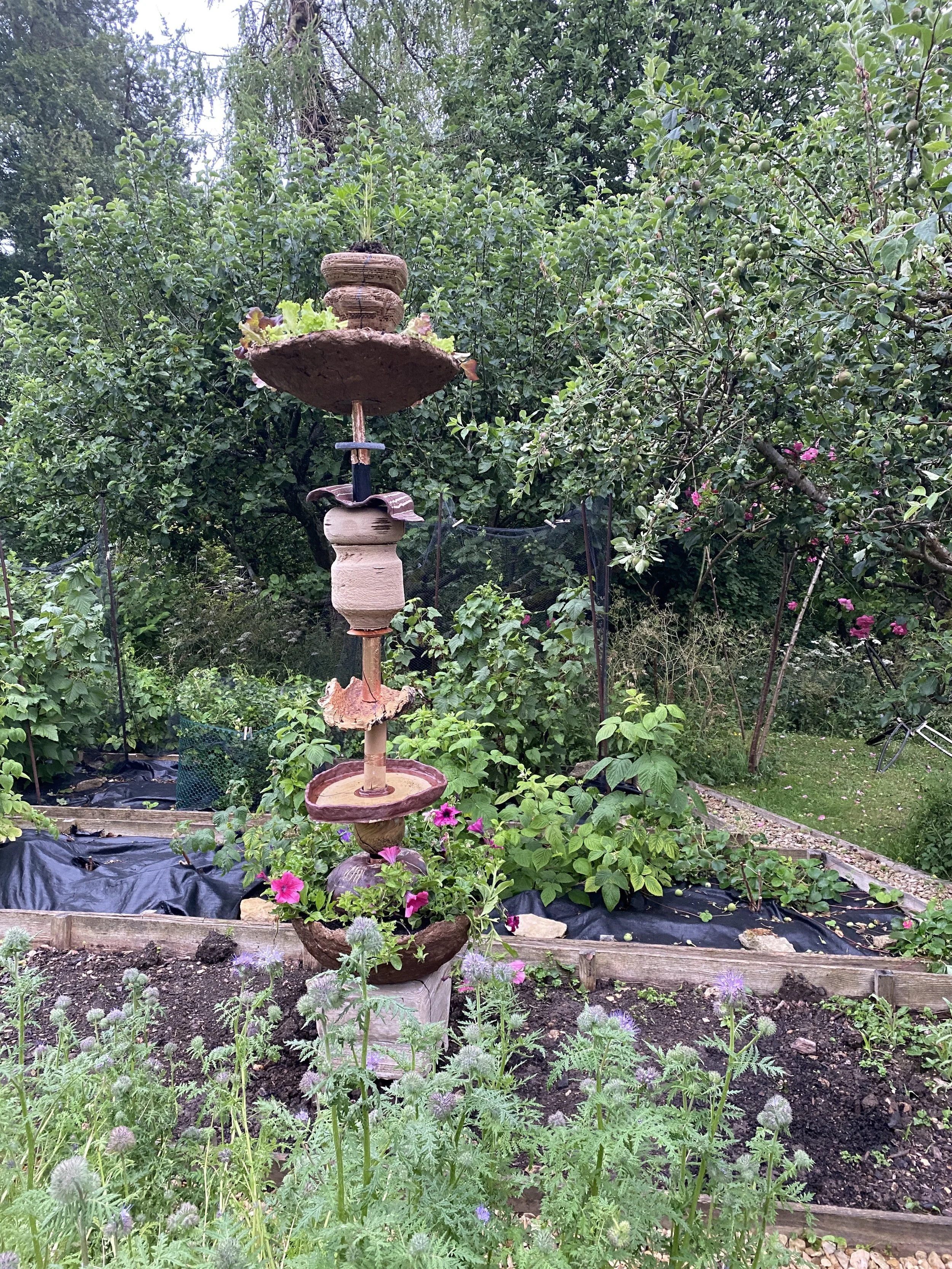
Jessica Akerman - Splanter - 2025, Cardboard, clay, wood, steel, automotive paint, plants
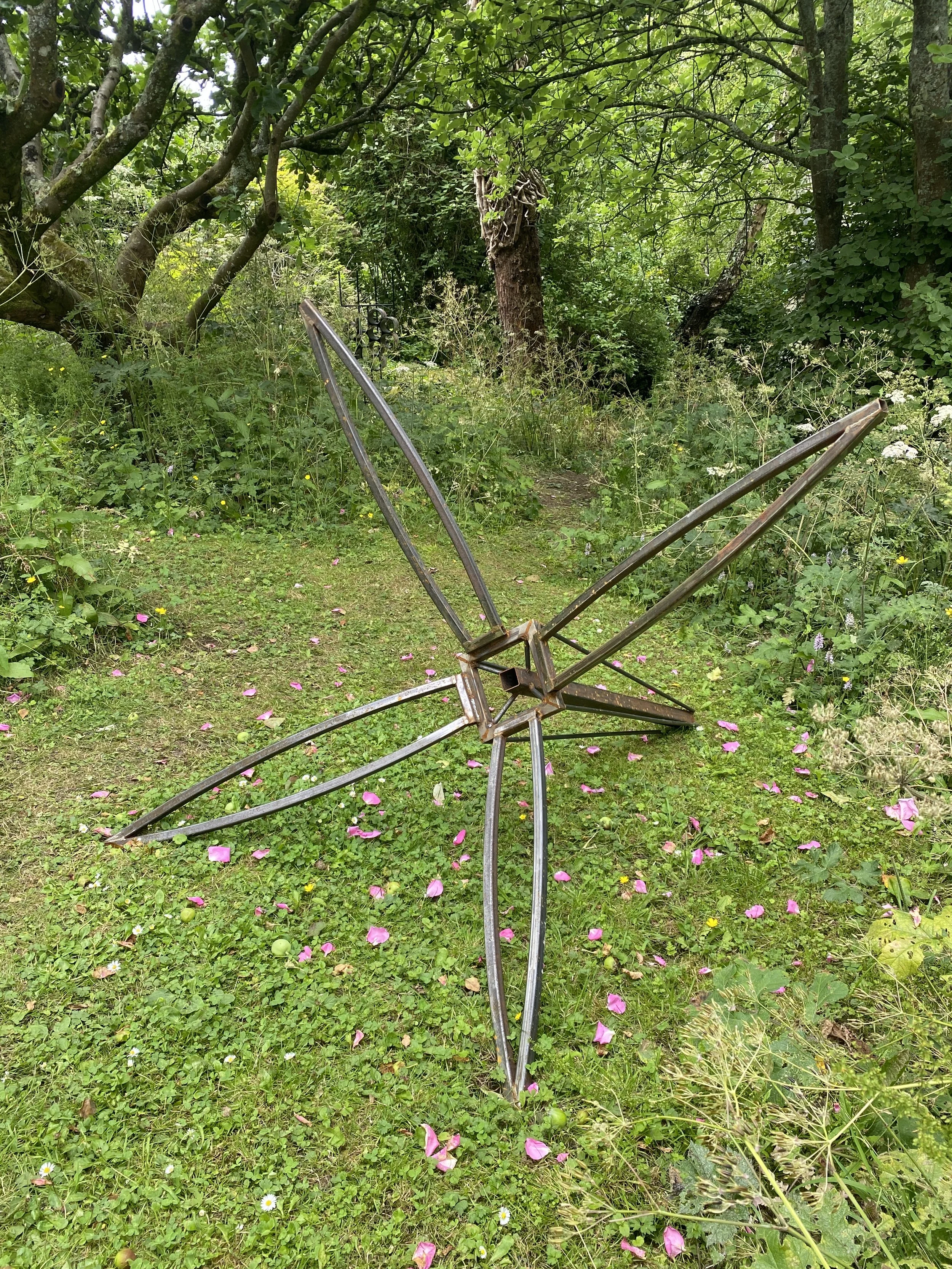
Luke Chin- Joseph - Fuchsia - 2025, Steel, 106cm x 120cm x 137cm

Andrea V. Wright - Passengers - 2024/25 Steel, salvaged pipes, sand, polyurethane foam, canvas, pigment, latex, thread, paint 52.5 x 121.5 x 42 cm

Liz Elton - Bound - 2025, Bio material, household textiles, vegetable dyes from kitchen waste, water miscible paints, soil, silk, seeds and leaves of native edible plants. 200x300cm

Chantal Powell - Gods and Giants - 2014 , Steel, glass, photograph printed on clear vinyls, 160cm x 60cm x 60cm

Alice Sheppard Fidler - The promise, the magic, the deception - 2025, Timber, wallpaper, velvet sandbags, 6 panels 183 x 54 cm

Valentino Vannini - Will I Meet Your Eyes #1 - 2024 - Concrete, steel, synthetic fibres, grass from the Heath, branches, petroleum jelly , 290 x 200 x 160 cm

Will Cruickshank - Large Flask - 2018, Water carved plaster and thread, 134cm
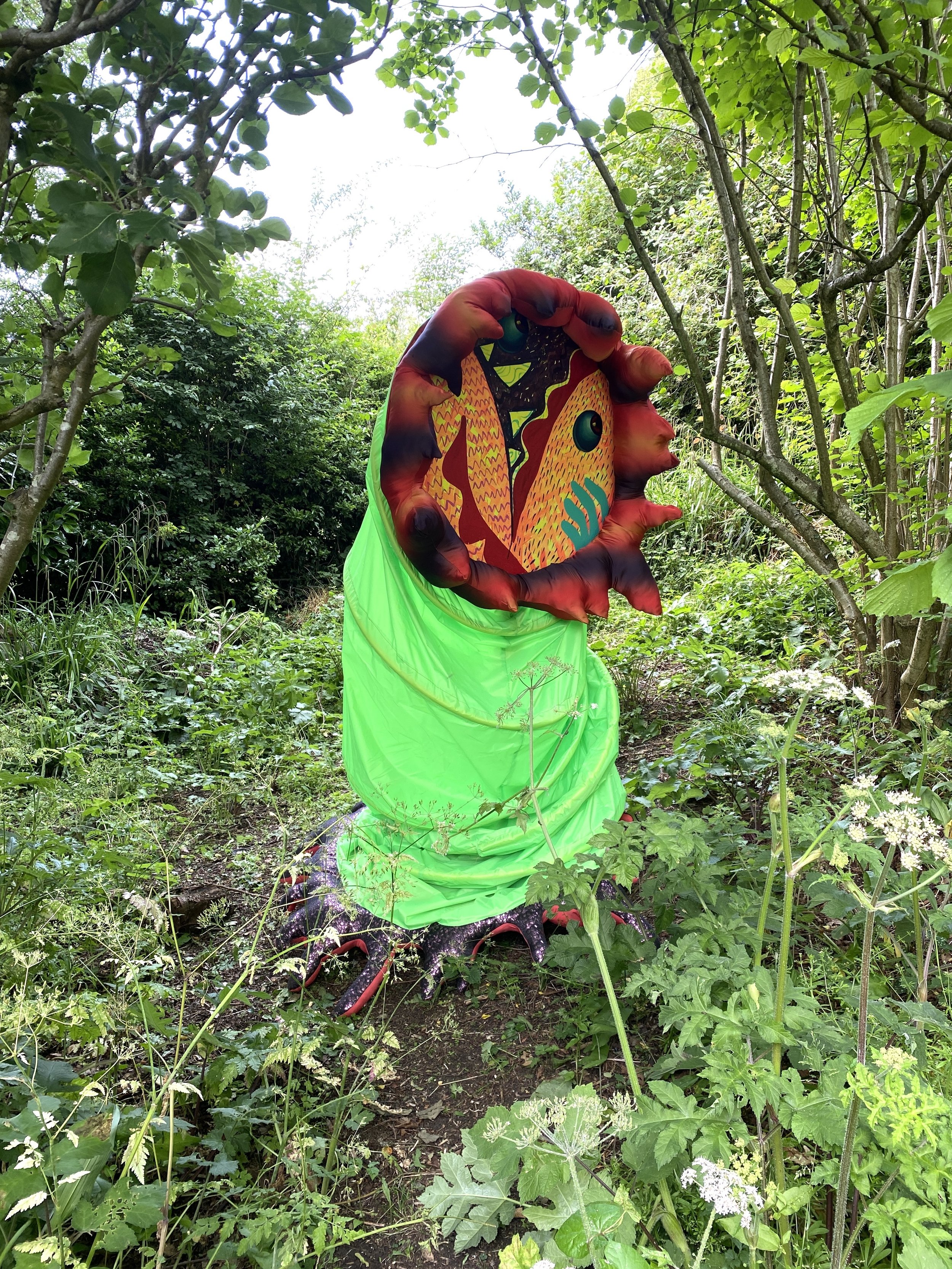
Flora Bradwell - Worm - 2024, Acrylic on osb board and soft sculpture, 2.5mx1.2mx1.2m

Valentino Vannini - Will I meet your eyes? #3 - 2024, Concrete, steel, synthetic fibres, tree suckers, petroleum jelly, 220 x 60 x 70 cm
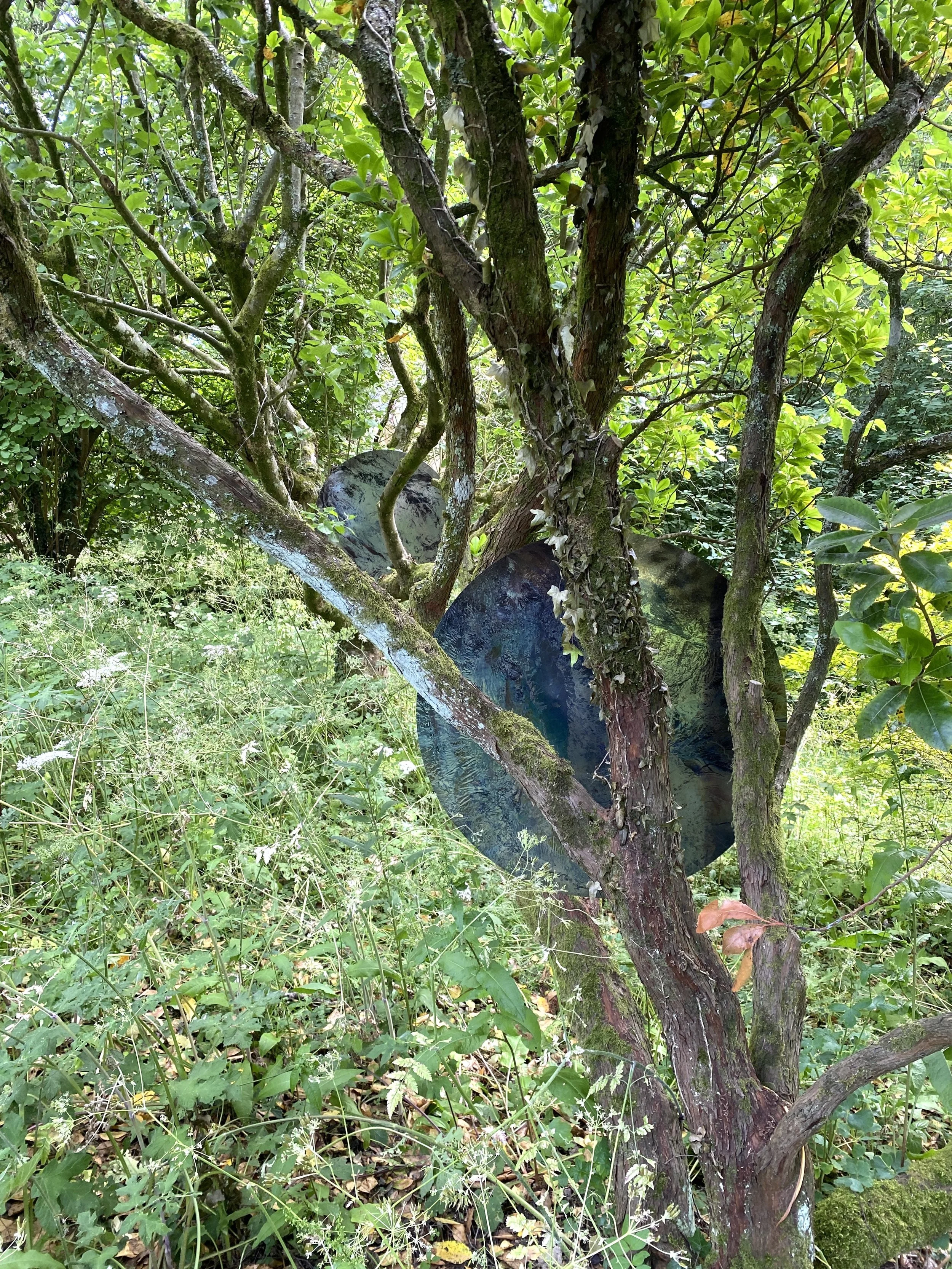
Chantal Powell - Lens 1& 2 - 2018, Steel, direct to media printing inks

Luke Chin- Joseph - 4,110 steps - 2024, Wood, metal, string, found objects, 25 x 25 x 207cm

Jessica Akerman - Felt Drawing - 2022, Felt, acrylic paint

Young People from the Venture Hub, Gloucester (14-18yr olds approx) - One Head Many Legs - 2025, Mixed media, 170 x 132 cm
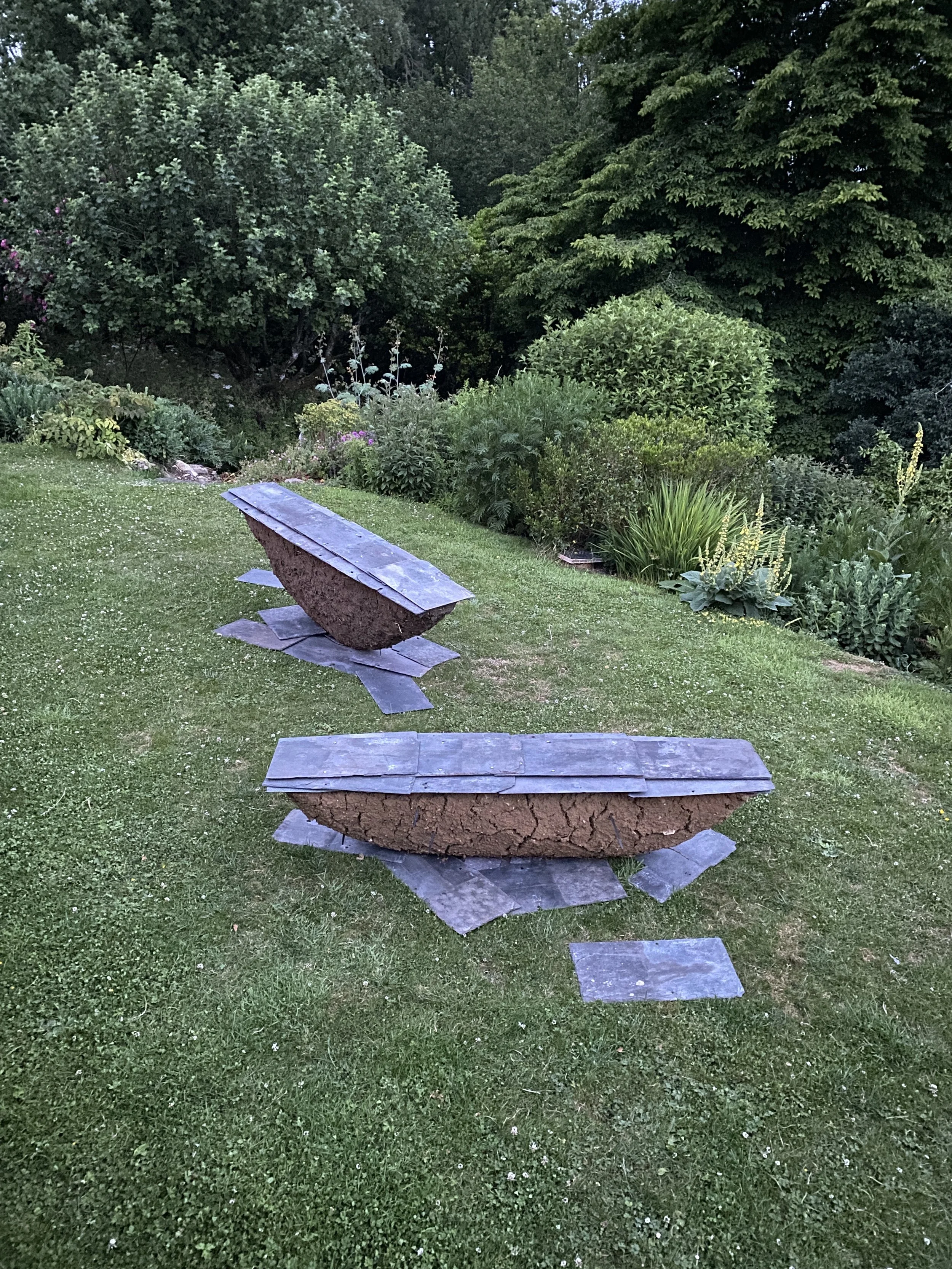
Barbara Beyer - Underway I - 2024, adobe from London clay, wood, slate, roofing felt, 180 x 59 x 50 cm Underway II 2025, adobe from Cotswolds clay, wood, slate, roofing felt, 193 x 80 x 50 cm
Download PDF of works with text on each artwork
Audio Description for THISS 2025
Notes from the artist and curator Alice Sheppard Fidler
An important part of my practice is working collaboratively with other artists and feeding into the creation of a supportive artist community. In bringing together 10 artists from the South West and London to respond to the theme Adaptable Matter, I am placing myself within the context of a wider network of artists making and thinking in similar ways to myself.
With nearly 500 audience members (over the two weekends) made up of both curious, attentive novices and creative professionals primed for the experience, the exhibition itself was a way of activating multilayered conversations between artists, artworks, nature, and the public, in a rural area. The exhibiting artists stayed at the Hide so they could be around to partake in those conversations but also to give them a period of time away from their normal environments. By hosting the artists here I hoped to encourage the incubation of ideas in a fluid and organic format.
Receiving Arts Council funding this year enabled me to facilitate the above and to work collaboratively with young people from two youth charities in Gloucester, whose work was shown in an exhibition in their communities and at the Hide as part of the professional exhibition. Additionally, I was able to employ some young local talent for writing, journalism, and invigilation.
My methodology is built around an ethos of flexibility and openness, holding space with a framework that allows freedom and experimentation. In my own creative practice, as well as the work I do with professional artists and with young people, I am interested in exploring questions that don’t necessarily have answers.
Artists in the exhibition were selected by a human-led process that started with me thinking about the people behind the work, and then the work they make. It would take a lot more funding to run an open call, but out of the nine additional artists, 6 were ones I did not know, or only in passing, beforehand. There are some artists I had an existing professional relationship with, and I was very pleased that Jessica Akerman, who exhibited in 2022, offered to help organise and run this year's show.
I asked the artists for existing work as I knew the artists fee wouldn’t finance the making of new work, however, most of the artists chose to make work that responded to the site after having been on site visits. I’ve noticed that something about the chance to respond site-specifically reignites a passion for making as it helps build momentum within a practice. As the time for the install neared, there was a dynamism - the atmosphere being both lively and alive.
Progressing on from last year's exhibition, where works were selected for their temporality, consideration of material use, or light touch, this year I asked the question that if we are wanting to make permanent works, how are we considering the dearth of existing material yet also limited resources on the planet? The theme aimed to tackle this large topic with a playful and sensitive approach.
I could see clearly in all the artists' works that they were doing something transformative with their materials, in either bold or subtle ways. My curiosity led me to bring them together to jostle amongst the greenery, and to call and respond across the site.
-

Will Cruickshank (b.1974 UK) has a multidisciplinary practice which includes sculpture, film, photography, and printmaking. His recent work has focused on making objects through a studio based development of experimental machinery, materials, and production methods.
He studied Fine Art (Sculpture) at Manchester Metropolitan University 1994-97, and has taken part in exhibitions and residencies nationally and internationally. He was awarded an Arts Council England International Artists Fellowship for a residency in Yunnan Province, China in 2007, and Arts Council England DYCP funding for studio research 2018-19.
-

Barbara Beyer is a Sculptor living and working in London. She is member of the Royal Society of Sculptors, The London Group and Studio Member at Rochester Square Ceramics. Her work addresses and celebrates but also questions the consequences of our fundamental ability to shape, change and make.
Barbara was born in Rheydt Germany, where she studied Fine Art, History of Art and German Literature, at Johannes Gutenberg University. From 1993 to 1997 she joined the Sculpture Class of Prof Ansgar Nierhoff. In 1998 she moved to Edinburgh where she was a member of the Edinburgh Sculpture Workshop until 2002 when she moved to London.
-

Luke Chin-Joseph (b. 2000) is an artist working across sculpture, installation and photography. He is interested in the constant flux of urban city landscapes, the materials and processes that shape these environments. Luke works with industrial and found objects, woven into fabricated sculpture – with an element of play.
Luke graduated from Camberwell College of Arts in Sculpture and is currently exploring notions of time and modes of archiving, rhyming with undertones of humour and whimsical cartoon. Objects and images are exaggerated and pushed, with often the gesture being the focal point of the work.
-

Liz Elton was born in Bristol. She works across a wide range of media including painting, photography, video, print and large scale installation. Liz has completed a Hospital Rooms commission, is the recipient of a Mark Rothko Memorial Trust Artist in Residence Award, and has been shortlisted for the John Moores Painting Prize three times. Residencies include the Florence Trust, Groundswell Regenerative Farming Festival, and the Bothy Project on the Isle of Eigg, supported by Windsor and Newton. She has a BA in Painting and an MA in Fine Art, from University of the Arts London, and a BA in History of Art from UCL. Liz is a member of the Royal Society of Sculptors.
-

Chantal Powell is a British artist born in 1977, whose practice blends Jungian psychology, alchemical symbolism, and personal exploration of the unconscious. With a PhD in psychology, she utilises a Jungian art-based research approach to engage with archetypal material and the psyche. Working across ceramics, glass, textiles, and painting, her research into alchemical manuscripts informs her practice.
Powell has exhibited at galleries and institutions internationally, including The Lightbox Museum, Woking; La Boulangerie, Paris; and Guildhall Art Gallery, London. She is the founder of Hogchester Arts residency program and a faculty lecturer at JungAcademy. She also offers talks on archetypal symbolism and psychological alchemy and has co-curated exhibitions focusing on archetypally symbolic art.
-

Flora Bradwell's generously grotesque practice encompasses painting, sculpture, performance and installation. Flora completed her MFA in Painting at The Slade School of Fine Art in 2021, receiving the Felix Slade Award, The Jeanne Szego Prize and Sarabande Emerging Artist Bursary while there. In 2023 Flora received the Gilbert Bayes Award and a-n Artist Bursary. Flora's work has recently been exhibited The Royal Society of Sculptors, Matt's Gallery and Saatchi Gallery, London, Wakefield Art House, Wakefield, Liminal Gallery, Margate and Future DMND, LA.
Selected residencies include Vincent VanGogh Huis, Zundert Elephant Lab, London, Cyprus College of Art, Paphos, and SIM, Reykjavik.
-

Valentino Vannini, born in 1976 in Florence, Italy, is a London-based multidisciplinary artist. He holds an MA in Fine Art from City & Guilds of London Art School, where he is currently a fellow in the glass and cast department. He has received the Sculpture Award from Studio West Gallery, London, and completed a residency at Standpoint Gallery, followed by a solo show.
Recently, Vannini participated in group shows at Somers Gallery, SET Lewisham, Greenfield Project, Meeting Point Projects, The Phoenix Garden and White Conduit Projects. He has exhibited with New Contemporaries at Karst, Plymouth and the ICA London (March 2025).
-

Andrea V. Wright (b.1967) is a multidisciplinary visual artist based in Somerset, UK. She graduated from Chelsea College of Art & Design before establishing a career in fashion, styling, and music.
In 2016 Wright completed an MFA at Bath School of Art & Design and has since been selected for the Jerwood Drawing Prize 2017, the Royal Society of Sculptors Bursary Award 2017/18, and the Ingram Collection Purchase Prize 2019. In 2021, Wright was awarded an AN Bursary for the PADA residency in Lisbon, Portugal. Wright’s work is held in private collections in both the UK and abroad.
-

Jessica Akerman (b.1978, Wellington, UK) lives and works in Bristol. Her material-led practice includes sculpture, textiles and painting.
Akerman grew up in Ironbridge, Shropshire and Bradford, West Yorkshire. These industrial settings have informed her interest in the physical and social experience of work, an ongoing theme in her practice.
She studied Sculpture at Chelsea College of Art, and History of Art & French at UCL. She has exhibited in the UK and Ireland, has received funding from Arts Council England and a-n, and was a Lead Artist on Artichoke’s national artwork Processions in 2018.
Residencies include TheCoLAB Body and Place Residency 2024, Kent Cultural Baton Artist Retreat and Metal Time and Space Residency.
-

Alice Sheppard Fidler (b.1966, Birmingham, UK) works across sculpture, installation and sound. She is a founding member of Studio Voltaire Gallery and Arts Charity, London, and runs the artist-led initiative The Hide Artist Retreat in Gloucestershire. Before completing her MA in Fine Art at the University of the West of England in 2020 she worked in design for television, film, and fashion. She was a recipient of the Gilbert Bayes Award from the Royal Society of Sculptors, the CAS Emerging Sculptor Development Award, and Arts Council DYCP in 2023/24, and is a current Spike Island Associate.
Recent exhibitions include: Trinity Buoy Wharf Working Drawing Prize finalist 2024, Gilbert Bayes Award Show - Arthouse, Wakefield and Royal Society of Sculptors London 2024, Fluxus Museum Video Prize finalist, Paros 2024, Mother Art Prize finalist, London, 2023. Residencies include: PADA Studios, Portugal, 2023, Casa Regis Italy, 2022.
-





